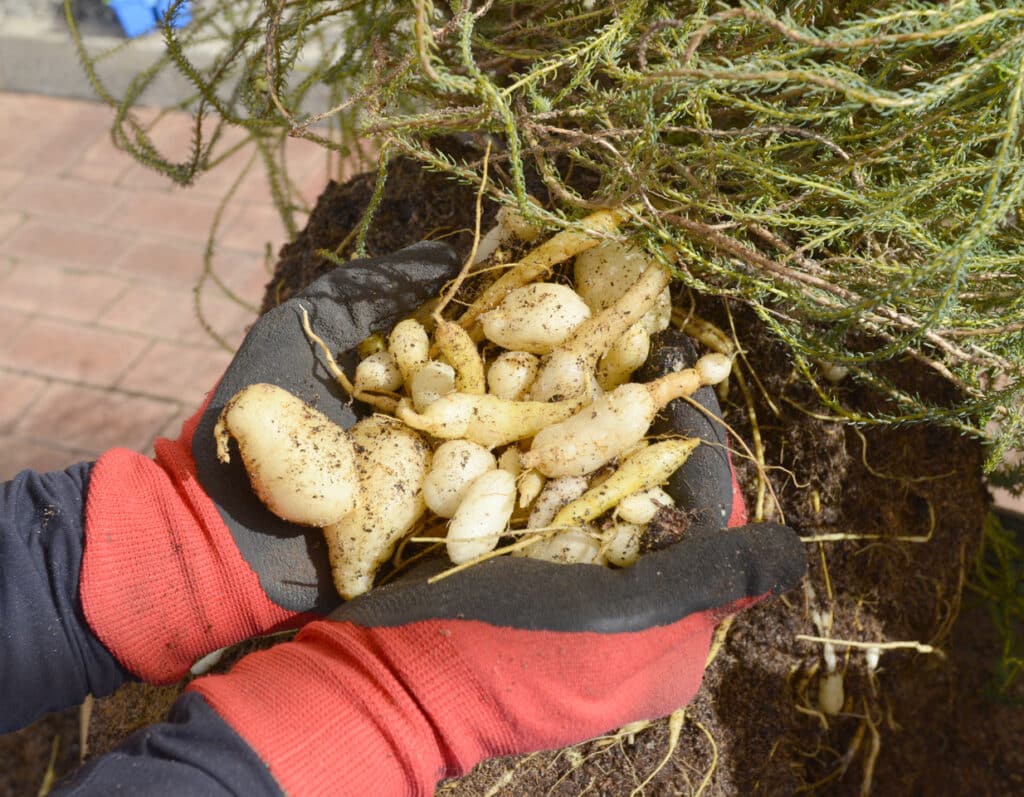Menu
Opening Hours: 9am-5:30pm, Every day except closed on Christmas Day and Boxing Day.
Opening Hours: 9am-5:30pm, Every day except closed on Christmas Day and Boxing Day.

Today we are going to talk about the soil and composting, straw and no-dig gardens, gardening
in containers and raised bins. We’ll look at winter herbs and vege for planting now, and how to
grow them with ease from seeds or seedling. After the talk, we will share morning tea, followed by
planting up your own mini vege garden, and a visit to the raised bed & compost bin managed by
Samara.
Why garden in an organic way? Let’s look at what all the terms mean:
Organic: The use of recycled organic material rather than chemicals to feed the plant, working
with nature to achieve a balance in the garden.
Sustainable: This encompasses gardening in such a way to limit environmental impact of gardening activities.
Permaculture: This is a design system for creating sustainable human environments. It is a philosophy and approach to land use.
Biodynamics: Microbiological activity is the means by which soil fertility is increased. (Rudolf
Steiner’s philosophy was central to this movement.)
The benefits:
Growing organically in a sustainable way has a number of important benefits. Plants grow more
slowly and have a greater concentration of nutrients. They do not have chemical residues. Biodynamic farmers would say they have more life than artificially grown crops. Importantly, aside from
benefit to us, growing in a sustainable way by recycling organic material, we reduce the impact
on the environment in many ways: less carbon release, less methane in rubbish tips, fewer ‘food
miles’ ie, fuel used to bring the food to your supermarket. Everything positive we do can help save
the planet.
The soil where it all begins!
The soil is the medium that anchors the plant and holds water and nutrient. Organic gardeners
know that it is much more. Let’s look at what is in the soil.
There is broken down rock and sediment in various quantities. Sand Is made up ofcoarse pieces
and clay of much finer particles, loam is a mix of different size particles. Organic matter plays an
important part. This reaches the soil via the breakdown of dead plant and animal material both in
the soil and washed down by the rains. Importantly in a healthy soil, there are living organisms
in the soil, worms and other invertebrates, fungi, bacteria and other micro plant and animal species, millions of them, a micro universe. There is also life giving air and water in various quantities
according to the soil type and climate. The components are held together in a form we call ‘soil
structure’ and this is easily damaged by over cultivating. The organisms play a part by introducing
air through their activity and creating drainage through the soil, especially important in clay soils.
The study of soils is very complex and fascinating. There are books that explain it clearly for those
who are interested.
All we need to know is that the soil is where it begins and ends, and the health of our plants depends on the life in our soils.
Why is organic material so important?
Organic material such as compost or soil improver is important for a number of reasons: It feeds
the micro-organisms that are breaking down this material to a form that can be taken up by the
plant. It holds many times its weight in water and attracts the ions or nutrients dissolved in the water to its surface. It creates air holes in otherwise airless clay soils.
Composting made simple.
“Composting can reduce the extent of global warming by reducing green house gas emissions.”
(1st week in May 08 is International Composting awareness week.)
Any organic material thrown in a heap will eventually rot down helped by micro-organisms
already present in the material itself and the soil. Composting methods have developed as ways of
speeding up this action.
Our summer climate is harsh, windy and dry and creates conditions that make natural breakdown
of organic material difficult. Applying the practices that worked in more damp temperate climates
can be disappointing. In winter it is possible to build an on ground compost heap, but in summer
it will need to be managed by adding water and ensuring the right proportion of materials.
Carbon/ Nitrogen ratio and why it matters.
The most important factor for successful compost is the carbon to nitrogen ration and this is addressed by using different materials in your compost. Adding high carbon material such as shredded paper, chopped leaves and pruning will avoid the slimy heaps if we just use food scraps and
lawn clippings. The moisture content is important, damp but not soggy to speed up the breakdown
of organic material. Without air the heap becomes ‘anaerobic’, slimy and smelly, pH drops and the
result is toxic to plants.
PH Let’s look briefly at pH.
This is the mysterious chemical side to gardening that I, and small children, find fascinating. Put
simply pH describes the acidity or alkalinity of the soil. The pH scale increases in multiples of 10,
so that with 7 as neutral, 8 is 10 x greater than 7, i.e., an alkaline soil. A pH of 6 is 10 x less than
neutral and an acid soil. The reason that pH is important is that chemically it affects the uptake of
nutrients, eg, in a highly alkaline soil iron is not taken up so that we get “pH induced iron deficiency”. It’s complex but all we need to know is that different plants require different pH, but luckily an organic soil is so close to neutral that almost everything will grow in it. (We call this “buffering the pH”.)
Lime will increase pH and Sulphur and organic material can bring it down.
Above the ground
Although below ground is such an important and fascinating part of the picture, we can’t stay
there all day. Lets look at what is happening above the ground, affecting our plants. We’ll look at
mulch, watering and pesky pests, before we move on to the exciting bit: what to plant in our sustainable vege garden.
Mulch – what it does, and the ideal mulch
Mulch has a number of important functions. Primarily it reduces weed growth and that makes
gardening a delight. You can concentrate on the fun bits without spending hours of back breaking
weeding. So don’t forget the mulch. Mulches such as straw gradually break down to increase the
organic content of the soil. They also insulate the soil, warmer in winter and cooler in summer.
An ideal mulch for the vege garden, but be aware that this mulch will absorb water so apply at
soil level using sub surface irrigation if possible. Drippers are a possibility. Hand watering must be
done carefully using a nozzle with small droplets that do not disturb the young plant. Winter is an
ideal time to start your garden, as the rains will do it for you.
Water and how to help penetration and retention
Veges in general require water almost every day in summer. As your soils improve and you top up
mulch, the water requirement will be less. Water restrictions deem that we can only water twice
weekly but it is still worthwhile installing a sprinkler system, preferably at ground level under the
mulch. Hand watering will be needed in hot weather. Check for water repellence. In sandy soils
use a soil wetter such as ‘Sand remedy’ or Eco-gro Soil Wetter. These products will also help microbiological activity in the soil.
Feed the soil, not the plant.
In a fertile soil, additional fertiliser may not be necessary. Ideally compost manures and organic
material to make them more accessible. Organic liquid feed is magic to give the plants a boost.
Seasol too is a tonic useful when transplanting and as a regular tonic. Resident worms will produce
fine plant food.
The no-dig garden and raised bins.
Hills residents struggle with hard lifeless clay soils, and may be discouraged by poor plant
growth. Using raised garden beds, it is possible to improve the fertility of the soil. Wooden poisonfree sleepers are hard to find but perfect for the job. Ours rotted down over ten years or so, and
we now have old paving slabs on edge, partly buried for stability. For gardeners with disabilities,
raised metal bins can be a waist height to allow easy access. Otherwise large pots with organic
potting mix are a great way to grow your herbs and salad veges.
Just a word about pesky pests, and our attitude to them.
This is whole new topic, and find out more in our info sheet on pests. The secret lies in creating a
balance in the garden with bird attracting plants to attract insect eaters, growing a variety of crops
and rotating them to confuse the nasties. Reaching for chemicals is not the best way to tackle this
problem.
Veges and herbs, an ideal place to start.
There are many reasons to grow your own veges at home: they taste real, they have no chemical
residues, they demonstrate to children just where their food comes from, it is incredibly satisfying
to watch food growing, it’s gentle exercise and the enthusiasm generated makes it seem easy.
Planting and Patience.
It’s easy to grow your own veges at home, but the process requires a little planning and patience.
Building up a healthy soil takes time, and along the way there may be disappointments, but plenty
of learning. Vege gardening is a great activity to do with children and grandchildren. Involve them
in your garden adventure.
Veges grow best in an open sunny position. Ideally tall crops should run north to south to avoid
excess shade on smaller crops, although in summer this can be a benefit. In areas of strong winds,
you may need to create a windbreak with shrubs or a structure. Avoid strong plants too close as
their roots will rob your veges of nutrient and water.
What to plant in winter:
If you have never grown veges before start with the easy ones.
Silverbeet, lettuce, broccoli are all easy to grow.
Herbs for winter include parsley, chives and marjoram.
Chinese cabbage, Bok Choy and other Asian greens are easy to grow.
For the children, grow potatoes. It’s fun doing them in a tub, gradually adding more soil as the
shoot head for the sun.
Also to delight the children, plant some baby carrots, radish and beetroot seeds in a sunny spot.
They will need weeding at first but once they have grown to a cm or so, mulch with straw to reduce weeds.
As you become more confident, try peas and broad beans, another favourite. These may require
staking or a trellis. Cauliflower and brussel sprouts are usually planted early in the year, but I prefer
to wait until the weather cools. They are slow crops and can be disappointing. They are fun to
grow for the novelty of watching the heads form. Onions and leeks are slow crops that requires
initial weeding, but not attacked by pests and trouble free. Celery requires management to get the
lovely long pale stems but even grown au naturel they make a wonderful tasty addition to winter
soups.
What to plant in summer:
Capsicum, tomatoes, eggplant are easy. Choose dwarf tomatoes if you do not want to stake the
plants. Corn is great fun but needs rich organic soil and plenty of water. Ground hugging summer
crops include cucumber, zucchini, squash and pumpkin. Don’t forget to plant basil parsley and in
cool spots coriander. Lettuce and other leafy crops are perfect for summer salads.
We love your feedback, please review us on Google

“Zanthorrea Nursery has been an accredited nursery and garden centre for many years, and is active in supporting Greenlife Industry Australia and the Nursery and Garden Industry of WA”
